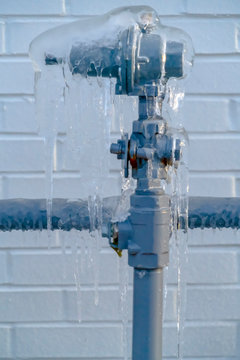Crucial Tips to Avoid Frozen Pipes in Cold Weather: Professional Guidance
Source This ArticleWe have encountered the article on Preventing and dealing with frozen pipes below on the net and accepted it made good sense to talk about it with you in this article.

Cold weather can damage your pipes, especially by freezing pipes. Here's exactly how to avoid it from occurring and what to do if it does.
Intro
As temperature levels drop, the risk of icy pipelines boosts, possibly resulting in costly fixings and water damage. Comprehending just how to avoid frozen pipes is crucial for homeowners in chilly climates.
Recognizing Frozen Pipes
What creates pipelines to ice up?
Pipes ice up when subjected to temperature levels below 32 ° F (0 ° C) for expanded durations. As water inside the pipelines freezes, it increases, taxing the pipe wall surfaces and potentially creating them to break.
Threats and damages
Frozen pipes can result in water disturbances, home damage, and pricey repair work. Burst pipelines can flooding homes and create comprehensive structural damage.
Signs of Frozen Pipes
Recognizing frozen pipelines early can stop them from rupturing.
Just how to determine frozen pipes
Seek decreased water circulation from faucets, unusual smells or sounds from pipes, and visible frost on revealed pipes.
Avoidance Tips
Shielding vulnerable pipelines
Cover pipelines in insulation sleeves or use warmth tape to protect them from freezing temperature levels. Focus on pipelines in unheated or external locations of the home.
Heating methods
Maintain indoor areas effectively heated, especially locations with plumbing. Open closet doors to allow warm air to circulate around pipes under sinks.
Protecting Outside Pipes
Garden hose pipes and outside taps
Disconnect and drain pipes garden hose pipes prior to winter season. Mount frost-proof spigots or cover outdoor taps with shielded caps.
What to Do If Your Pipes Freeze
Immediate actions to take
If you think icy pipes, keep faucets open up to soothe pressure as the ice melts. Utilize a hairdryer or towels soaked in hot water to thaw pipes gradually.
Long-Term Solutions
Architectural modifications
Think about rerouting pipelines far from outside wall surfaces or unheated locations. Add extra insulation to attics, basements, and crawl spaces.
Updating insulation
Buy top notch insulation for pipelines, attics, and wall surfaces. Appropriate insulation helps keep regular temperature levels and minimizes the threat of icy pipelines.
Final thought
Protecting against frozen pipes needs aggressive procedures and fast responses. By understanding the reasons, indicators, and preventive measures, home owners can protect their pipes during winter.
6 Proven Ways to Prevent Frozen Pipes and Protect Your Home
Disconnect and Drain Garden Hoses
Before winter arrives, start by disconnecting your garden hoses and draining any remaining water. Close the shut-off valves that supply outdoor hose bibs and leave the outdoor faucet open to allow any residual water to drain. For extra protection, consider using faucet covers throughout the colder months. It’s also important to drain water from any sprinkler supply lines following the manufacturer’s directions.
Insulate Exposed Pipes
Insulating your pipes is an effective way to prevent freezing. Pipe insulation is readily available at home improvement stores and is relatively inexpensive. Pay close attention to pipes in unheated areas such as the attic, basement, crawl spaces, or garage. Apply foam insulation generously to create a buffer against the cold. You can also wrap your pipes in heat tape or thermostat-controlled heat cables for added warmth.
Seal Air Leaks
Inspect your home for any cracks or openings that could let in cold air. Seal any holes around the piping in interior or exterior walls, as well as the sill plates where your home rests on its foundation. Additionally, make sure to keep your garage door closed unless you’re entering or exiting. Leaving it open creates a significant air leak that can lead to frozen pipes.
Allow Warm Air Circulation
During cold snaps, it’s essential to allow warm air to circulate evenly throughout your home. Leave interior doors ajar to promote better airflow. Open kitchen and bathroom cabinets to help distribute heat consistently around the rooms. If you have small children or pets, be sure to remove any household chemicals or potentially harmful cleaners from open cabinets for safety.
Let Faucets Drip
A small trickle of water can make a big difference in preventing ice formation inside your pipes. When temperatures drop significantly, start a drip of water from all faucets served by exposed pipes. This continuous flow helps prevent the water from freezing. Additionally, running a few faucets slightly can relieve pressure inside the pipes, reducing the chances of a rupture if the water inside does freeze.
https://choateshvac.com/6-proven-ways-to-prevent-frozen-pipes-and-protect-your-home/
:strip_icc()/snow-outdoor-faucet-pipes-4af65d1e5e904fb1aa7bf74071fe5d89.jpg)
We had been made aware of that write-up on How to prepare your home plumbing for winter weather through a friend on a different web page. Appreciated our article? Please quickly share it. Let someone else check it out. Thank you for being here. Kindly check our blog back soon.
Call Today